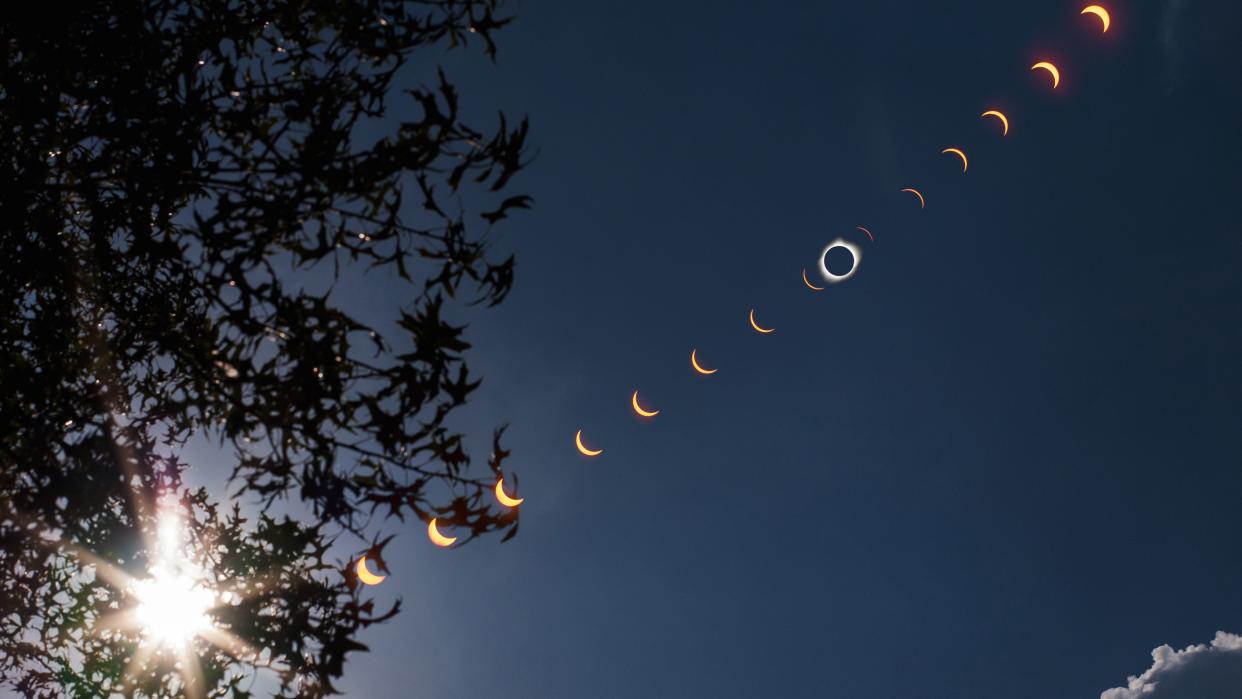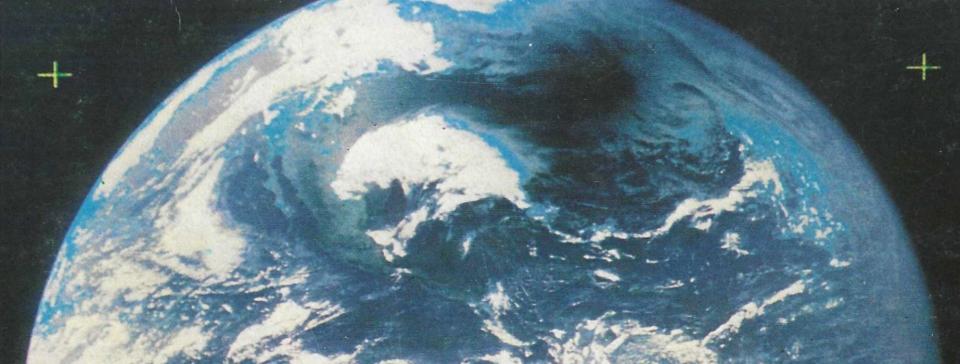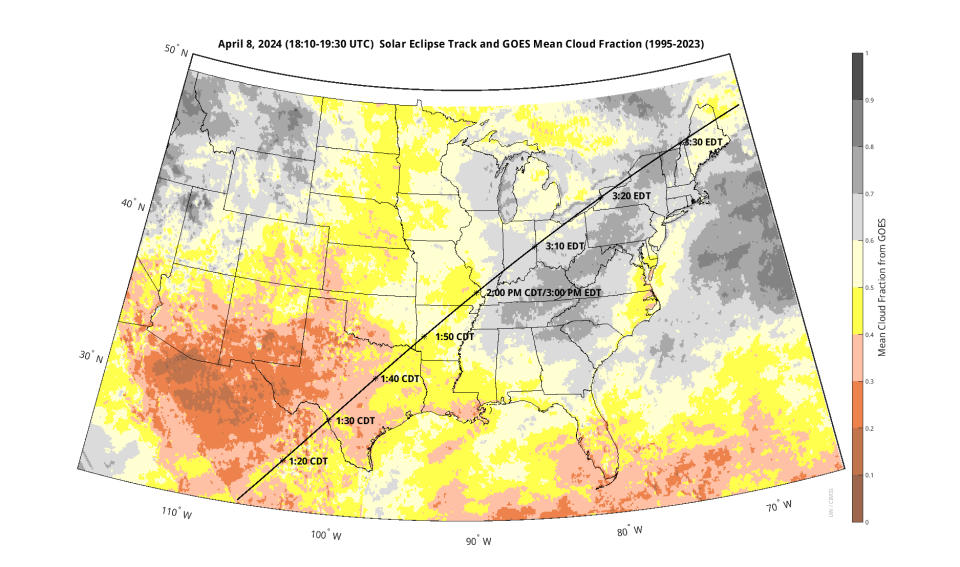How to give yourself the best chance of clear skies for April 8's solar eclipse

Saturday, March 7, 1970, in Perry, Florida, more than half a century ago, a tiny timber town's day in the sun was spoiled by a dense overcast that obscured a long-awaited total eclipse of the sun that more than 25,000 people had come to see.
The long-term weather records had suggested that there was a 70-percent chance of clear or partly cloudy skies, which was the primary reason why so many had gravitated to this community, normally populated by only about 8,000.
On that dank and dreary Saturday. scientists from around the world stood in the clutter of their cameras and gauges, shaking their heads and waiting in vain for even a brief glimpse of the eclipsed sun. As the moon's giant shadow swept in on schedule, an eerie afternoon darkness fell over the landscape, accompanied by croaking frogs and chirping insects.
Related: Total solar eclipse 2024: Everything you need to know

Max Waldmeier (1912 – 2000) a Swiss astronomer and director of the Zurich Observatory, who had a special interest in the sun, had planned this trip to Perry for two years with his scientific team, mainly because of its statistically encouraging meteorological patterns. But after the moon's shadow had passed, Professor Waldmeier was near tears as he helped his colleagues dismantle their heavy equipment.
This melancholy tale contrasts sharply with that of three amateur astronomers, who also came to Perry for the eclipse. But instead of staying under the gloomy skies, they quickly piled their equipment into a rental car and drove through the night more than 350 miles (560 kilometers) to Poston, South Carolina, where they found nearly cloud-free skies.
At noon on eclipse day, they set up their various instruments in a tobacco field, where they watched the southwest sky change from gray to pink and then to violet-gray as the moon's shadow rushed in. They saw Baily's beads and the scarlet solar chromosphere and the whitish solar corona, brighter than a full moon, as well as irregularities in the moon's dark edge against the brilliant corona. As totality ended, a yellow "diamond ring" signaled that the spectacular event was over. Said one of the three observers: "It was the shortest three minutes of my life!"
So, if you really want to see the upcoming total eclipse, the moral is simple:
"Stay mobile!"
More on this in a moment.
If you cannot catch the solar eclipse in person you can watch the total solar eclipse live here on Space.com. And keep up with all the actions with our total solar eclipse 2024 live updates blog.
Related: How to observe the sun safely (and what to look for)

Statistics: Danger!
One should always remember that long-term climatological statistics — no matter how reliable — are not absolute.
In his 1973 novel, "Time Enough for Love," science fiction writer Robert A. Heinlein came up with the following aphorism: "Climate is what we expect, weather is what we get!"
How true this is!
And what happened at Perry, Florida in 1970 is far from being an isolated incident. Indeed, it has certainly happened more than a few times with other eclipses over the years.
Another excellent example of this is the total solar eclipse of July 11, 1991. The Big Island of Hawaii was entirely within the totality path. Climatology dictated that when the northeast trade winds blow, the eastern (windward) side of the island would see heavy clouds and rain, while on the sheltered lee (western side) of the island, the trades would blow downslope and dry out. Since the trade winds blow 95 percent of the time in July, the assumption was that clear skies were a given for the western side of Hawaii. Unfortunately, a tropical upper tropospheric trough ("TUTT") moved over the Big Island on eclipse day, bringing more clouds than sun and disappointing the tens of thousands of people who had come to Hawaii to view the eclipse.
In recent weeks, I have spoken to many people who have made arrangements to witness the April 8 eclipse from Texas. Remarks typically are along the lines of: "I've chosen Texas because that's where the odds by far, favor clear skies." In actuality, however, the weather outlook from Texas through the Deep South looks only marginal at best.
Climatological records indicate little difference, from the point of view of weather from Texas to Arkansas. Throughout this area, average cloud cover in April is consistently about 60-65 percent. Clear days occur on April 8 in about 45-50 percent of the years for which records are available, and the chances of seeing the eclipsed sun at any given moment on April 8 is about 55-60 percent. Admittedly, these conditions are somewhat better than those for the Northeast United States, Ontario, Quebec, and Atlantic Canada, but, surprisingly, not that much better.
In short, April weather is extremely variable and changeable, so at any location along the totality path, there is some hope of very clear skies (or dense clouds) on eclipse day.
Keys to success: Latest forecasts, good judgment and mobility

Truly reliable meteorological weather forecasts for eclipse day are not possible more than a week or so ahead of time. For mid-latitudes during late winter and early spring, large daily deviations from normal frequently occur. We must also take into account the eclipse itself, for even if April 8 starts with exactly normal cloud cover, it would not be normal at the time of totality because of the roughly 75-minute interval of increasing partial eclipse. During that interval, the reduced solar heating will result in a cooling of the local atmosphere, attended by decreased cumuliform clouds as well as an increase of stratiform cloudiness, as has actually been observed at past eclipses.
So, if, on eclipse day, your observing site has blue skies mixed with a scattered-to-broken layer of puffy cumulus clouds just prior to the start of the eclipse, you might want to stay right where you are, because as the partial phases progress and the sun wanes to a thin crescent, the ambient air temperature will likely fall and those convective clouds — driven by warming sunlight — will dissipate. Conversely, if the local atmosphere is somewhat humid or muggy, low-stratus clouds or even fog could develop as the air cools.
In view of such weather uncertainties, plans about where to observe should be kept flexible up to the latest possible time before the eclipse, which (as was the case in 2017) occurs on a Monday.
Related: Solar eclipse 2024 weather prospects: Q&A with an expert
Right now, NOAA's Weather Prediction Center is providing increasingly reliable forecast products, which will enable people to choose a location where the chances of a cloudy sky are low. These can be augmented by forecasts issued by National Weather Service forecast offices located near and along the totality path.
By this upcoming weekend, it will be time to shift from FORE-casting to NOW-casting: The very latest meteorological data, including careful scrutiny of satellite images and radar scans, should be used to modify the plans based on climatological data only.
Eclipse chasers today have a tremendous advantage over those from just 20 years ago, in that they can now utilize their smartphone screens to view satellite and radar imagery, as well as GPS data to help make last-minute moves on local roadways. An excellent hard-copy reference guide to augment your digital data is the "Road Atlas for the Total Solar Eclipse of 2024" by retired NASA astrophysicist and avid eclipse chaser, Fred Espenak. The Atlas contains a comprehensive series of 26 maps of the path of totality across Mexico, the USA and Canada.
Finally . . . as we stressed earlier . . . a mobile strategy will offer you the highest probability of witnessing this greatest of celestial road shows, for regardless of where you plan to be, staying mobile to dodge cloud cover will always enhance your chances.
To those who plan to position themselves in the totality path with hopes of experiencing the panoply of phenomena that accompany that magical exclamation "totality!" we wish one and all good luck and clear skies.

